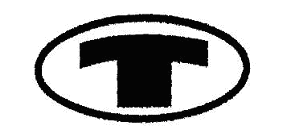

ECG: Decision on similarity of single letter marks “T”
October 22, 2014
Categories:
Post date:
22. October 2014 - 14:38
The European General Court (ECG) decided on 7 October 2014 that a likelihood of confusion between the word/device trademark “T” of Tifosi Optics and the earlier trademark “T” of Tom Tailor exists (Case No.:T‑531/12).
Background of the Case and Subject Matter
In September 2009 the American enterprise - Tifosi Optics, Inc. - filed an application for registration of the Community Trademark No. 008543183 at the Office for Harmonization in the Internal Market (OHIM) (as seen below on the right hand side). In February 2010 the German company - Tom Tailor GmbH - filed a notice of opposition because of the similarity to their word/ device Community Trademark No. 001368232 which you can see left below. Both trademarks are - among others - registered for clothing and glasses.
By decision of 17 September 2012, the Second Board of Appeal (BoA) of OHIM annulled the Opposition Division’s decision upholding the opposition: the identity and similarity of the goods concerned and the degree of similarity between the marks, considered cumulatively, were sufficiently high to justify the conclusion that a likelihood of confusion exists, even if the earlier trademark is to be considered to be of weak distinctive character.
vs.
Decision of the ECG:
The ECG confirmed that a likelihood of confusion between the signs exists.
The court pointed out that the relevant public contains professionals with a high level of attention and the general public with an average attention span. It also came to the conclusion that the trademarks are visually similar and aurally identical.
However, it held that the BoA was wrong in finding the letters T conceptually identical. There is well-established case law that the letters of the alphabet have no semantic meaning and that it is thus impossible to compare them conceptually.
Therefore, the ECG came to the result that the decision of the BoA must be confirmed, even if the earlier trademark has a weak distinctive character. With respect to all opposed goods likelihood of confusion exists.
Link: http://curia.europa.eu/juris/document/document.jsf?text=&docid=158372&pageIndex=0&doclang=EN&mode=req&dir=&occ=first&part=1
Related
- "Neuschwanstein" is not a trademark!
- 1 December 2017: Madrid Monitor takes its place as the one and only tool for tracking international trademarks
- 1 January 2020 - Changes in Classifications - Trademarks, Designs, Patents and Utility Models
- 100th Anniversary of Bavaria (Germany) - A glance at trademarks, start-ups, innovation & events
- 10th Anniversary Edition - 10 Things to Know about LexDellmeier - Past, Present & Future
- 14 June 2013: Munich Patent Law Conference - Calculating Damages in Patent Infringement Cases
- 15 Top Brands - Interactive Brand Rating - Years 2000 - 2018
- 15 Years LexDellmeier - 2024 New Year Wishes
- 2014: Statistics for Community Trademarks
- 2024 World IP Day - Building Our Common Future with Innovation and Creativity

